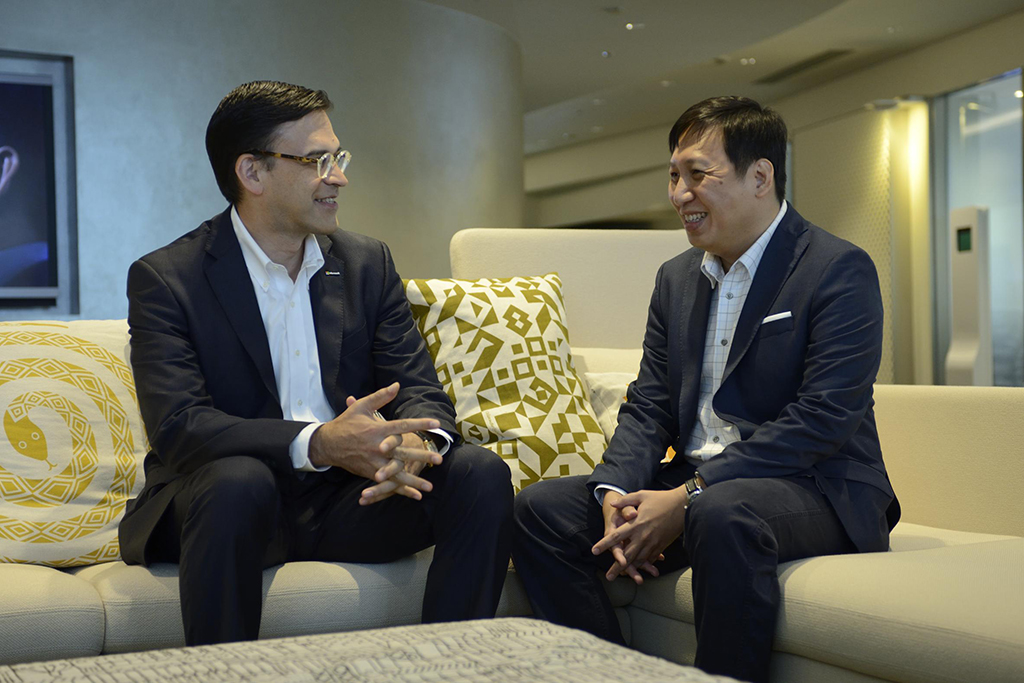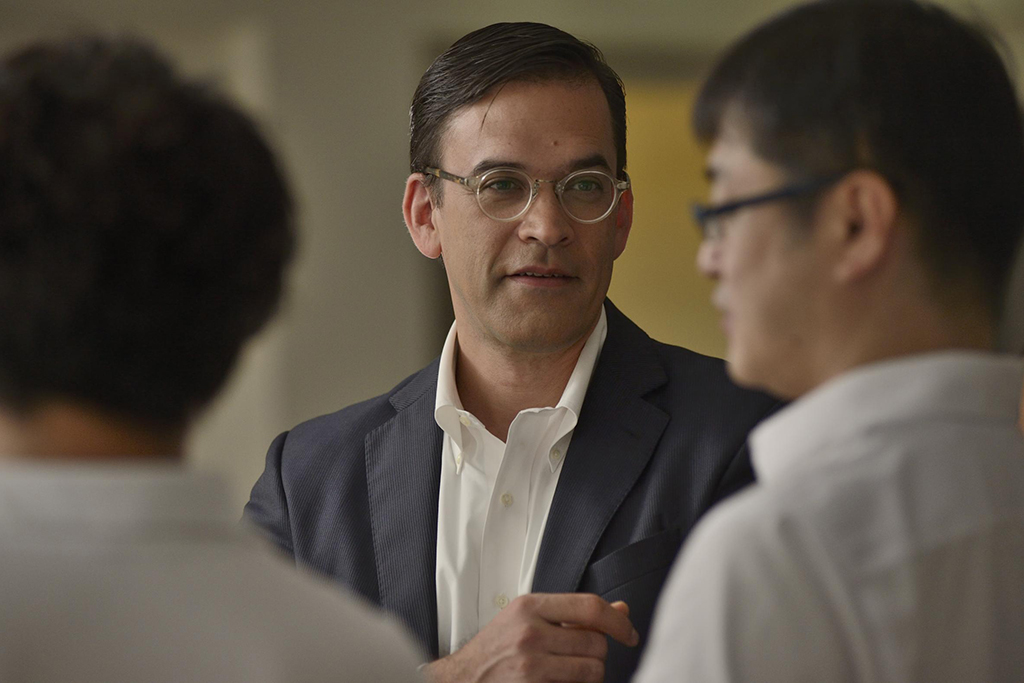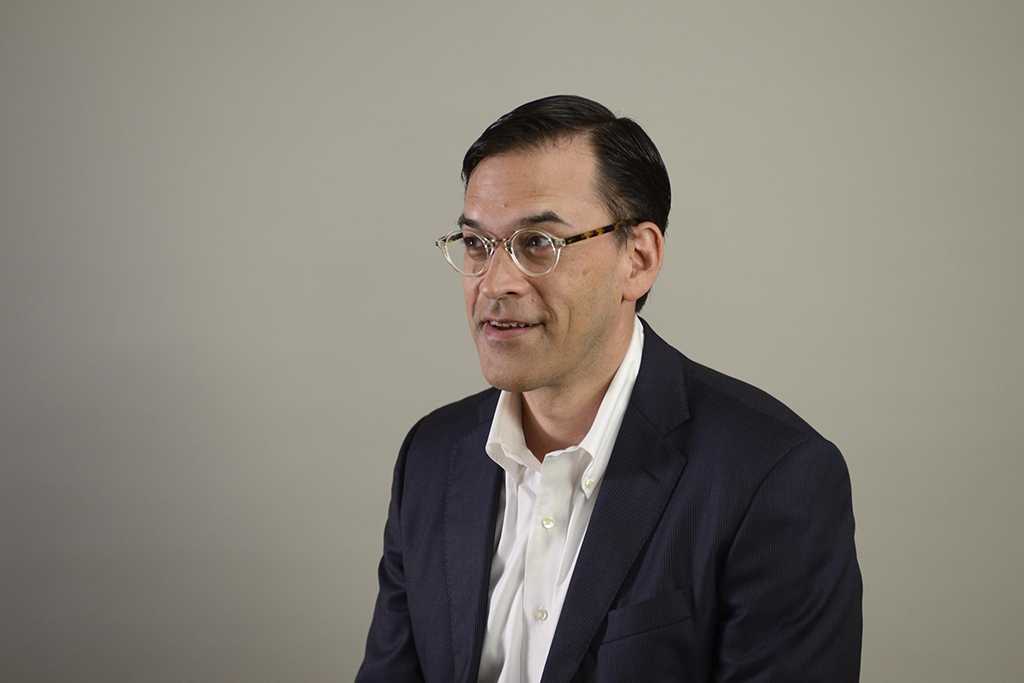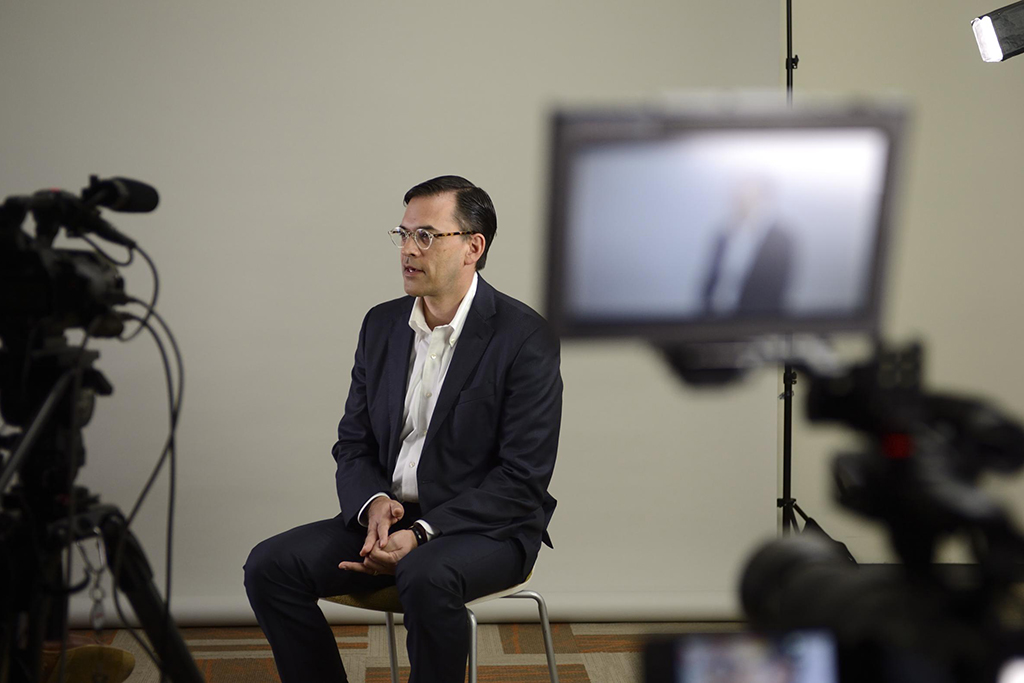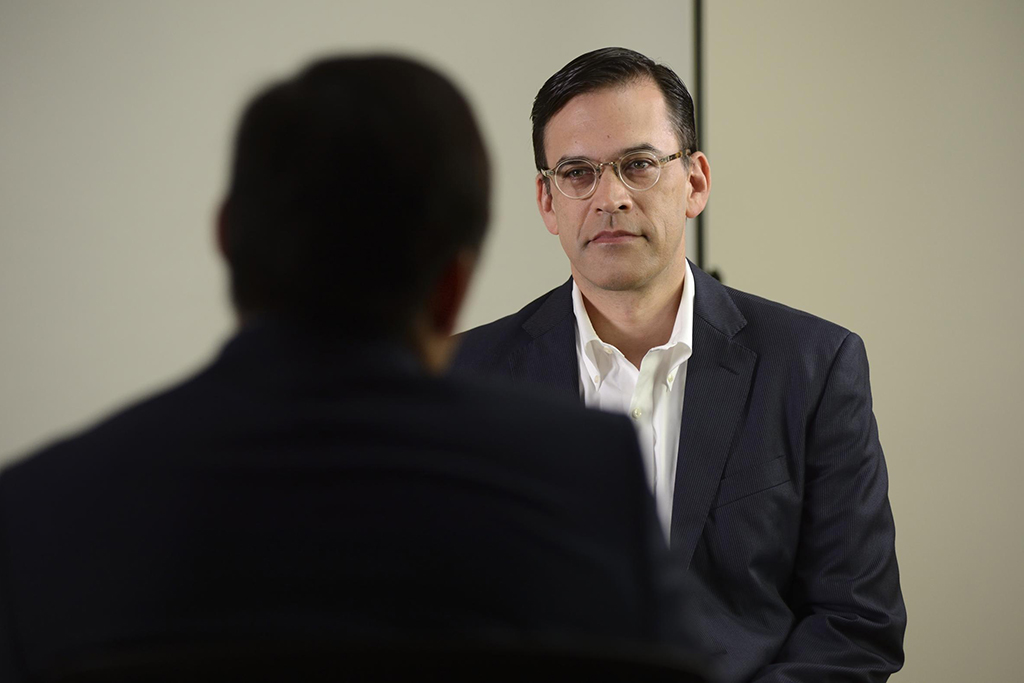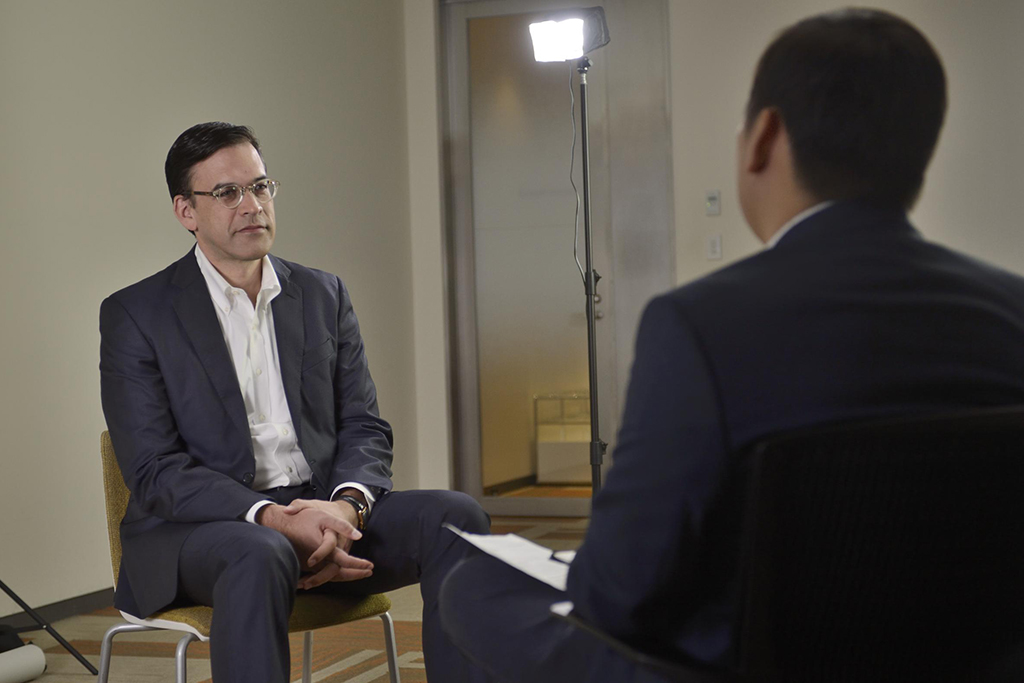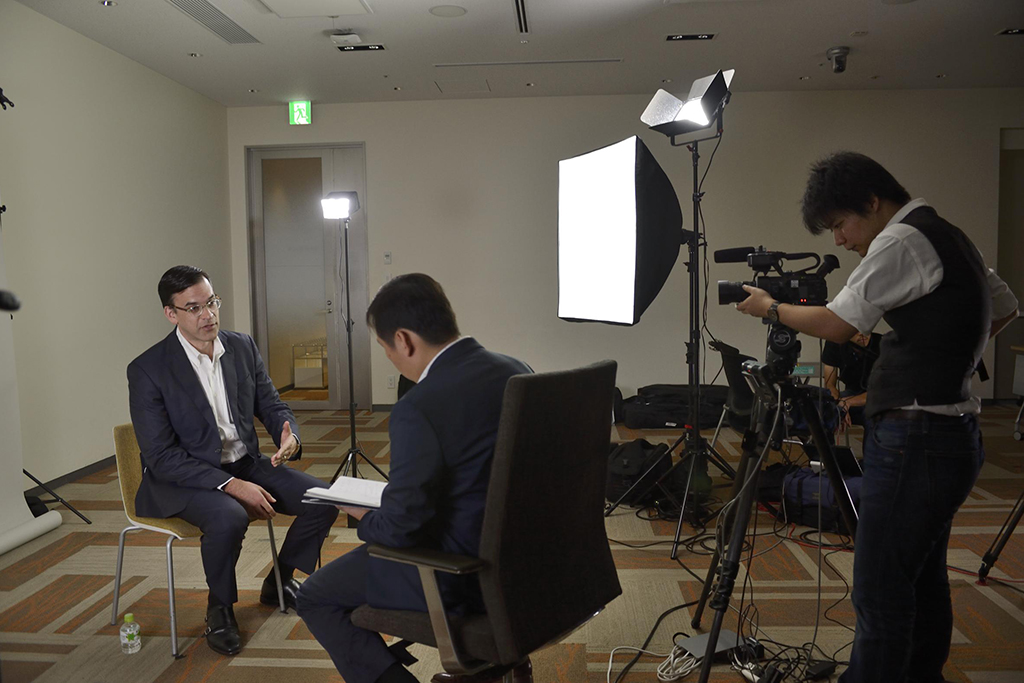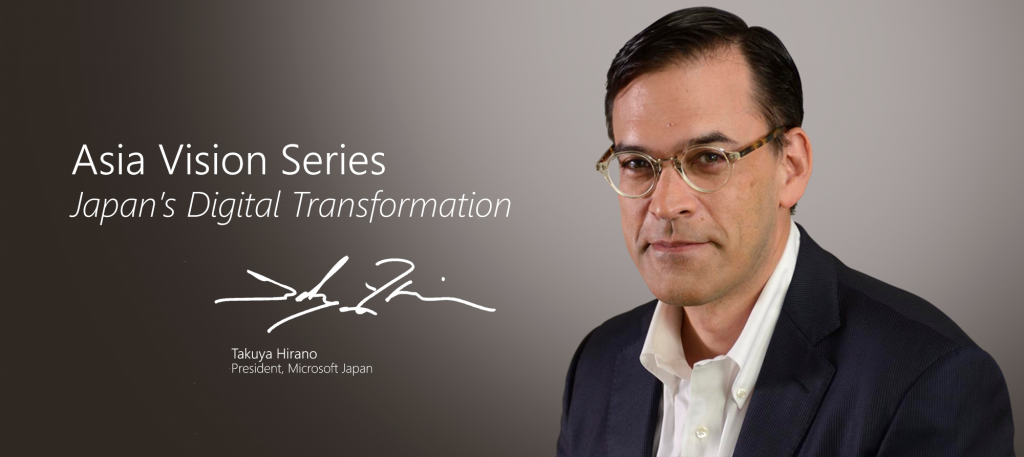
Asia Vision Series: Takuya Hirano
In the Asia Vision Series features, we dive into key industry trends and issues with our subject matter experts and visionaries in the region. In this interview, Alfred Siew, a veteran IT journalist formerly with Singapore broadsheet The Straits Times and founding editor of a popular technology blog, speaks with Takuya Hirano, president of Microsoft Japan. They dive into issues affecting Japan’s digital transformation journey. On a personal level, Hirano also shares how his own sense of identity and global experiences have shaped his world view.
Digital transformation: The future after the lost decades
“Never trust e-mail. Print out the e-mail, fax it over, and if the message is important enough, make sure to call the customer.” These were memorable instructions from a supervisor to Takuya Hirano when he was working for a Japanese firm in Silicon Valley in the late 1990s. It was a lesson on the Japanese pursuit of perfection and customer service, though some could argue reflected a mindset loyal to tradition that remains today.
Fast forward to recent years, the use of fax is still prevalent in Japan – especially with the economy being driven by small and medium sized companies. According to Hirano, now president of Microsoft Japan, this dedication – or reluctance to depart from tradition – is what some critics believe has contributed to the nation’s productivity crisis. In fact, the Organisation for Economic Co-operation and Development (OECD) Compendium of Productivity Indicators 2015 ranked Japan 13th from the bottom when it came to labor productivity, or gross domestic product (GDP) per hour worked.
Hirano believes this challenge presents a growing urgency for Japanese businesses and organizations to embrace digital transformation – an opportunity to bounce back from the sluggish global economy and perhaps make up for lost ground from the lost decades. The last two decades have been economically painful for the country, not just in terms of stalled productivity growth, but also ceding its place as the region’s electronics giant to rivals such as those from South Korea and China.
No country is quite like Japan, says Hirano, who was born and raised in Hokkaido, in the north of of the country. Despite having worked in the United States, Europe and now back in Japan in his 11th year with Microsoft, he finds his home country unique in its approach to business. He believes Japan’s commitment to quality and customer satisfaction can be harnessed to boost its efforts at digital transformation after the lost decades.
Japan can lead once again in the digital economy precisely because it is no stranger to technology, Hirano argues. As consumers, the Japanese have always embraced innovations such as mobile technology, video games, and cloud services. Businesses, whether they are start-ups or large enterprises, can seize this opportunity, but they have to decide how to navigate between the analog and digital worlds.
“Nothing beats face-to-face, so we have to decide what we have to do – more analog or face-to-face versus what can be done or achieved through digital. If we have clarity in this, then there is no lack of trust or there is no disappointment from the customer. Rather, there is going to be more appreciation because there will be a greater speed in what we do,” he contends.
Digital technology and the traditional transformation mindset are already in the country, so that’s a super strength – but it’s all about how to really make this core technology available to everyone and democratize the technology to the people.
Hirano sees plenty other opportunities for the country to leap ahead, but they all have a common denominator of having to embrace new technologies. Whether it be mobile technologies for working remotely, or virtual reality which enables trainees to learn in a safe, simulated environment, Japanese companies can get ahead of the curve.
So how does a company succeed at digital transformation? Hirano outlines that there are four important elements they need to focus on: become more engaged with customers, empower employees, optimize business operations, and transform their products and services using digital content. These dimensions are not new, but what has evolved is the role that systems of intelligence now play, providing better insight from data and converting that into intelligent action, he explains.

The first pillar of digital transformation is to become more engaged with customers. This includes predicting what they want before they know they want it, based on data intelligence. Offer it to them in a way that’s natural, like having a conversation with a representative from a company, Hirano says.
The second pillar is empowering employees. Instead of asking around and hoping that a co-worker has an answer to your question, why not build an infrastructure where emails, documents and applications can be easily found? Analytics can help uncover information across an organization, and provide insight to what is going on, he said.
The third pillar involves optimizing business operations. It is not enough to know what is happening now in the business – but also to anticipate what will happen, and be prepared to act on that insight. This can be achieved through machine learning and the Internet of Things, which can leverage millions of data points from processes and sensors to recognize patterns and generate predictive insights.
The final pillar is to transform products and services companies based on data intelligence, to unlock new revenue streams and stay relevant to the market.
There is some grounding to Hirano’s optimism about Japan’s capacity for change. Throughout the past 50 years, the country has weathered much change – technological and otherwise. This has resulted in the need to adapt being embedded in the mindset of the people, he observes.
Companies know they have to deliver impact in other ways than exports in this increasingly mobile, cloud-enabled business world. And they can find a way to do this, without sacrificing their usual high standards. It all begins with seeking a balanced approach, Hirano affirms.
Putting digital transformation on the business agenda
Digital transformation is not just about moving to digital platforms, or upgrading IT resources. Empowering employees and optimizing work processes are also critical parts of the equation.
Wanting to leverage the power of the cloud and mobile, Microsoft Japan began exploring the idea of teleworking five years ago. However, it was not until the company’s experience with the Great East Japan Earthquake on March 11, 2011, that its shift to teleworking really gained traction.
“The earthquake forced us to adapt our work style, so that we could work 100 percent mobile. So the day or the next day after the earthquake, all our employees were able to continue to work,” says Takuya Hirano, president of Microsoft Japan. “We called all our customers to make sure that they were okay, asking them if there was anything we could do to help.”
The experimentation with teleworking was so successful – and productive, that it validated a new style of work going forward. Fast forward to today, employees can enjoy the flexibility of freely working from remote locations as required – a movement that Microsoft believes is spreading across the country.
In Japan, teleworking represents a big change from the long hours that employees are often expected to physically spend in the office. This deeply entrenched culture has often been blamed for negatively impacting the national productivity rate, due to factors such as time spent on commuting. This also often discourages female workers from contributing to the labor force – even on a part time basis, after they have started a family.
Japan was ranked 22nd in the world for labor productivity among OECD countries in 2015, and has held the lowest score among the G7 countries for the past 20 years. In fact, improving the country’s productivity has become such a national issue – the government recently appointed a Minister of Workstyle Innovation to address the challenge.
To contribute to the improvement of the nation’s work-life balance, the government in 2014 began supporting small businesses who introduce telework programs, including subsidies of up to three-quarters of initial cost and a maximum limit of 1.5 million yen (US$13,500) for communications and other equipment needed.
By 2020, Japan aims to increase the number of companies offering telecommuting options threefold from 2012. It has also set a target of raising the ratio of those working from home at least one full day per week, to 10 percent or more of the total labor force.

Embracing technologies to work in a smarter and more productive fashion is part of the journey of digital transformation.
“Work style innovation is a super important topic not just for me personally, but also for the company and government,” says Hirano. “So I feel good that we are aligned to help everyone in the journey of digital transformation.”
“We have been inviting customers and partners to join us in our teleworking movement from 2012. Last year, we had 651 participants for “Telework Week 2015”. This year, we collaborated with 833 companies for an expanded version called “Workstyle Innovation Week 2016 in collaboration with the government,” he says.
Successful digital transformation should always be mapped with the business outcome in mind, and not be using technology for the sake of it.
Since embarking on this new world of work, Microsoft Japan now regularly measures how successful its work style innovation has been. Employees are rewarded for making calls and arranging meetings more promptly.
“A Japanese company, on average, takes about 10 days before they have an official meeting, from asking for the meeting to an actual meeting to happen; in our case, 5.5 days,” says Hirano. “The new work style empowers employees with the flexibility to not only become more productive but also achieve more work-life balance. This has helped significantly in attracting and retaining talent. In fact, we have halved the attrition rate of female staff.
Ultimately, the digital transformation journey needs to be well-thought out and be mapped to business outcomes as different companies will have different objectives.
“In helping companies transform, we have learnt it is more efficient to ask not only what they need but to try harder to understand their issues and find new ways of getting the desired result. Whether this is using machine learning, cognitive technology or IoT (Internet of Things) – the bottom line should be about the impact that the transformation brings,” explains Hirano.
The change should not be about moving to digital for the sake of doing so, he added.
Embracing security as an agent of change
Growing up, Takuya Hirano often heard remarks about how his looks and his name did not match. Born to a Japanese father and an American mother, the president of Microsoft Japan feels he has a heightened awareness of cultural differences, especially in a society that is often seen as homogeneous.
“So whether I like it or not, I get a lot of attention,” Hirano says. “It became easier for me to identify the difference, embrace the difference. In Japan, you become much more aware of it, and it has helped to form my mindset and, to a certain degree, my personality too.”
This has also helped him better understand and work with people from different cultural backgrounds, as he did throughout his career spanning across North America, Europe and Asia. Understanding their mindsets and motivations is important as culture plays a big part in successfully embracing digital transformation.
This was particularly clear to Hirano when he was working in Europe and overseeing 25 different markets. In some of them, he found that piracy was a culturally endemic issue – ranging from 90 percent to 100 percent of computers running on pirated software. “When I talked to the government, it was 100 percent piracy. When I went through their number at one bank, there was also 100 percent piracy. What was more surprising was that many of them did not see it as a big deal but instead treated it as a normal way of life,” he recalls.
“How did I change their minds? Understanding what makes them tick – and focusing the conversation around trust, commitment, partnerships and how we can help them be much stronger and secure, on top of pointing out the obvious of doing the right thing and how pirated software is a major security liability,” adds Hirano.
Security is critical enabler for digital transformation, as people will not use technology they don’t trust. “By having the right culture to make cybersecurity a top priority, we can help to build greater trust in technology and all that it promises to enable and foster digital transformation,” says Hirano.
The urgency to focus on cybersecurity intensifies with the increased sophistication and stealth of cyberattacks against companies, governments and consumers. The rise of these online threats reflects the growing convergence between internal IT environments and the external world through mobile devices, applications, supply chains, vendors, customers – where any of the end user points can be a potential source for a cyberattack.
Security is a critical enabler for digital transformation – driving this mindset requires the right corporate culture.
Just last year, the Japan Pension Service was hacked, leading to 1.25 million cases of personal data being leaked. The national pension system’s network was compromised after staff opened e-mails containing malware. The government has since sought to build tougher digital fences around its systems, and is not taking any chances by unplugging some departments from the internet.
However, security does not necessarily come at a trade-off when leveraging newer technologies, such as the deployment of cloud and mobile-based systems. With security designed from the ground up, new online services can actually be more secure, Hirano explains.
“As the government is trying to balance these top two challenging topics of security and innovation. one important step is to demystify the security concerns around cloud computing to drive digital transformation”
In seeking to be globally competitive, not only do businesses need to embrace the technologies that help maximize the impact of their work, security should also be part of the agenda, says Hirano.
And there are signs that things are headed in the right direction.
Just earlier this year, major local bank Sumitomo Mitsui Banking Corporation (SMBC) said it was going full-scale with cloud technology – leveraging Office 365, Microsoft Azure and Windows 10 – to empower its staff to become more efficient and competitive.
“When a bank, especially a major one, announces that they are going to use the public cloud, it sends a strong message across the board that even a bank – usually some of the most security-conscious organizations – is embracing it,” says Hirano.
Hirano believes the country’s government and business leaders can help shape a culture that makes it a leader in digital transformation. “I hope people will embrace what is happening in the rest of the world. That if you do not change, if you do not change fast enough, the world is going to change around Japan.”
 Takuya Hirano
Takuya Hirano
President, Microsoft Japan
Takuya Hirano leads Microsoft Japan’s operations from Tokyo. He joined the company in 2005 as a senior director, and was in charge of developing its overall business growth plan. Hirano then moved to oversee all aspects of the business in the 25 countries under Microsoft’s Central & Eastern Europe organization from 2011 to 2014, before returning to Microsoft Japan. He has also spent several years of his professional life in Silicon Valley, California. Hirano was born in Hokkaido, Japan and holds a Bachelor’s Degree in International Relations from Brigham Young University.
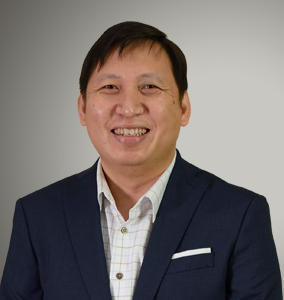 Alfred Siew
Alfred Siew
Alfred is a writer and speaker with close to 20 years of experience in journalism and communications in Singapore and Southeast Asia. Previously a technology correspondent with Singapore’s national broadsheet The Straits Times, he has covered the regional technology scene for over a decade. He now runs a popular technology blog – which is keenly followed by consumers, CEOs and government regulators alike, as well as his own editorial consultancy firm.





